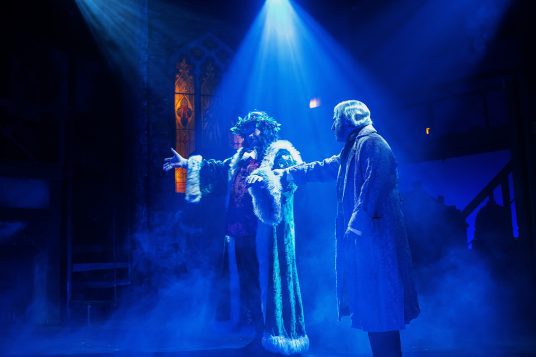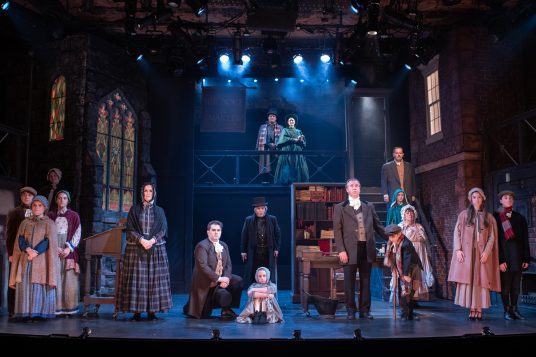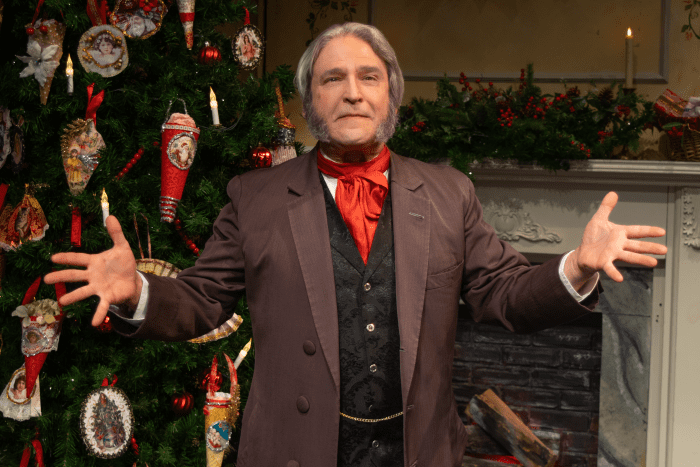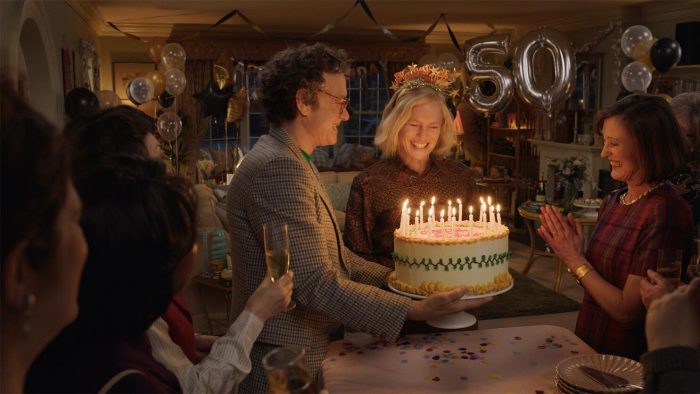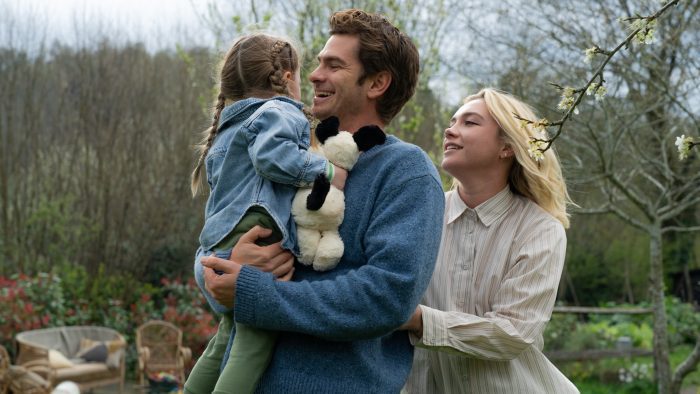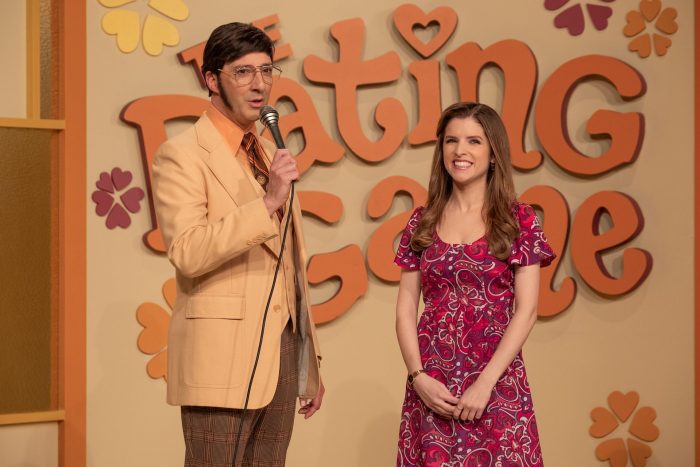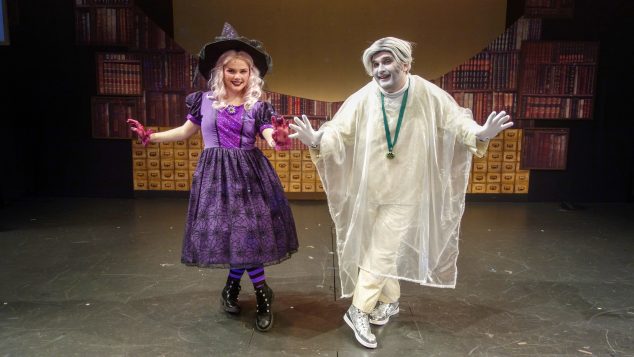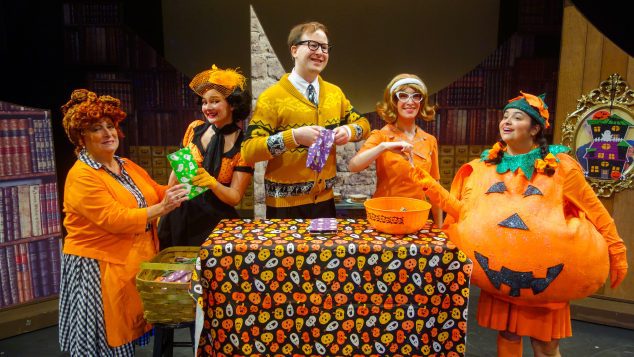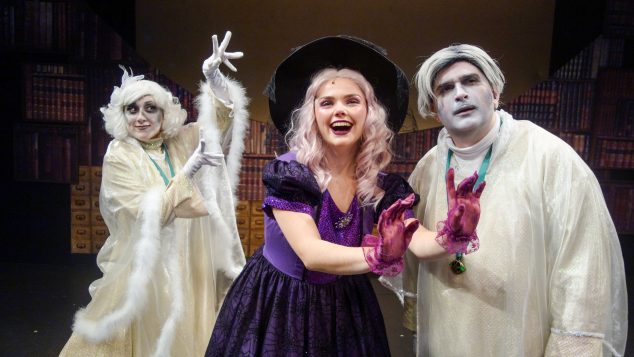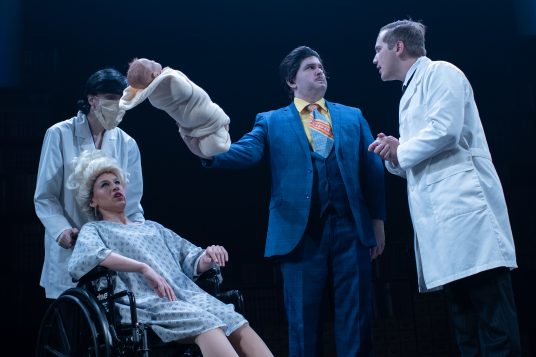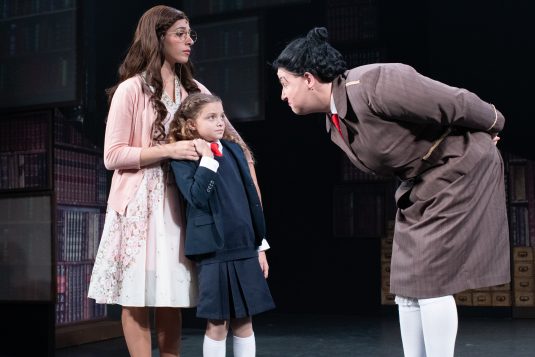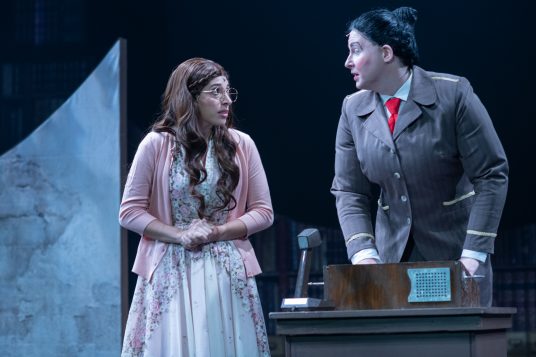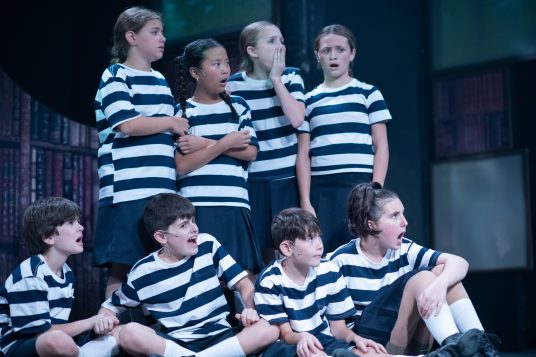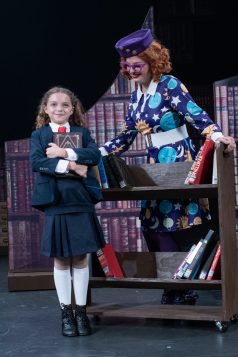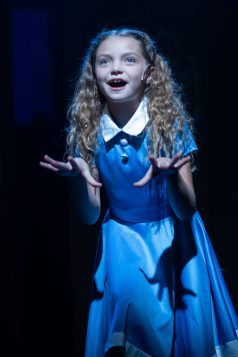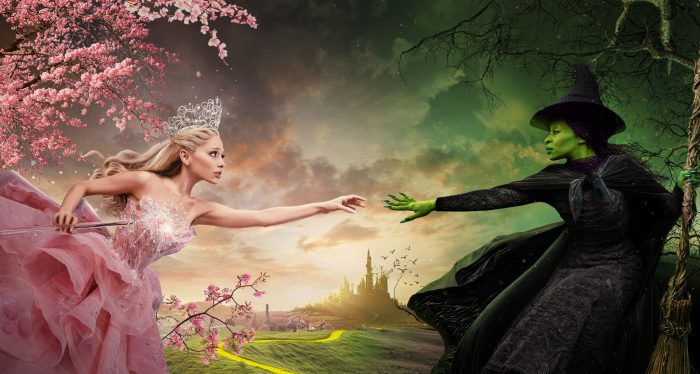By Julianne Mosher
Celebrating its 40th year, Theatre Three’s production of Charles Dickens’ A Christmas Carol is as great as it is in the present, just as it has been in the past, and as it will be in the future.
A pillar of the holiday season, not only in Port Jefferson but across Long Island, the Dickensian tale of Ebenezer Scrooge (Jeffrey Sanzel) and the ghosts of Christmas Past (Cassidy Rose O’Brien), Present (Scott Hofer) and Christmas Yet to Come (Steven Uihlein) is a story that taps into the hearts of the young and the old, making it the perfect way to kick off the season of giving.
The theater opened its annual show on Nov. 9 to a packed-out house filled with an audience dressed in their best Christmas best. Young girls wore their red velvet dresses with bows, while fathers wore silly, ugly Christmas sweaters and Santa hats. Ushers greeted visitors to their seats in top hats and Victorian-era gowns, a nice touch to the show which is set in the mid-1800s.
When the curtains opened up, the stage turned into the dark, dreary streets of London where the poor and hungry begged for food. We are brought inside Ebenezer Scrooge’s office, that he once shared with the late Jacob Marley (Stephen T. Wangner), where he works during Christmas Eve — a holiday he absolutely despises. Scrooge’s nephew is Fred (Uihlein), a young man who is starting a family of his own, but who yearns for his uncle’s approval since it’s the last piece of his mother he has on earth after her death during childbirth. Scrooge, an angry, frugal man, wants nothing to do with the holiday, and isn’t shy about how he feels about it. Bah-humbug.
Scrooge has an underpaid, overworked clerk, Bob Cratchit (Ray Gobes Jr.), who is a man of simple means and a high spirit. Scrooge is unkind to him, as well, but reluctantly gives him off on Christmas Day.
Later that night, Scrooge is visited by his former partner’s ghost. Marley warns Scrooge that he has the opportunity to avoid the same fate — a dire one where he roams the earth entwined in chains and money boxes because of his lifetime of greed and selfishness — with visits by three ghosts. He must listen to them or he will be cursed and spend eternity in the same purgatory as his friend.
The visits of the ghosts are done spectacularly. The Ghost of Christmas Past brings Scrooge back to scenes of his boyhood and young adulthood where we see the relationships between him, his family, his sister, Fan (Ash Stalker), Belle, his first love (Julia Albino) and his first job — an apprenticeship with Mr. Fezziwig and his wife (Scott Hofer and Ginger Dalton).
The Ghost of Christmas Present enters next and takes Scrooge to the homes of Fred and Bob Cratchit. Fred’s holiday party shows the group making fun of Scrooge, while the Christmas dinner with the Cratchit’s shows how poor the family of six copes with Scrooge’s poor wage. We meet Tiny Tim (Stanley Zinger), Cratchit’s ill son who the family prays gets stronger by the day. This opens Scrooge’s eyes.
Enough so that when the Ghost of Christmas Future comes on stage, the audience lets out an audible gasp.
Upon the stage is a 13-foot grim reaper who towers over Scrooge and his grave. Scrooge watches his possessions be stolen and sold, while mourners mock him during his funeral. He begs for forgiveness to the reaper and he vows he’ll change for good.
On Christmas morning, Scrooge is a new man. He sends a turkey to the Cratchit home, donates money to a charity he previously rejected and attends Fred’s Christmas party where he is welcomed with lovingly opened arms. The next day, Scrooge increases Cratchit’s wage in which Tiny Tim says the famous line, “God bless us, everyone.”
Theatre Three’s rendition of A Christmas Carol is always a treat, but this production was quite magical. Sanzel, who also serves as the show’s director, celebrated his 1,590th performance as the bitter, but complex, Scrooge — and he keeps getting better.
In fact, after performing the show for 40 years, the entire company has perfected the show. They have it down to a science with their special and unique adaptation, impressive set design (by Randall Parsons), stunning costumes (by Parsons and Jason Allyn) and fantastic lighting (Robert W. Henderson Jr.). After performing the show for four decades, we can’t wait to see how the next 40 look at Theatre Three. Don’t miss this one.
CAST and CREW: Julia Albino, Jason Allyn, Karin Bagan, Steven Barile, Jr., Kyle M. Breitenbach, James Bressler, Kelsie Curran, Ginger Dalton, Olivia Davis, Angelina Eybs, Sari Feldman, Roy Fleischer, Brad Frey, Jason Furnari, Christina Gobes, Ray Robes Jr., Skye Greenberg, Tim Haggerty, Kathleen Arabelle Han, Robert W. Henderson Jr., Scott Hofer, Patrick Hutchinson, Zach Kanakaris, Giovanni Ladd, Linda May, Cassidy Rose O’Brien, Randall Parsons, Mia Rofrano, William Roslak, Vivian Leigh Rumble, Jennifer Salvia, Jeffrey Sanzel, Aidan Sharkey, Ash Stalker, Amelia Theodorakis, Melissa Troxler, Steven Uihlein, Stephen T. Wangner and Stanley Zinger
Theatre Three, 412 Main St., Port Jefferson will present A Christmas Carol through Dec. 28. All tickets are $25 in November and range from $25 to $40 in December. To order, call 631-928-9100 or visit www.theatrethree.com.











